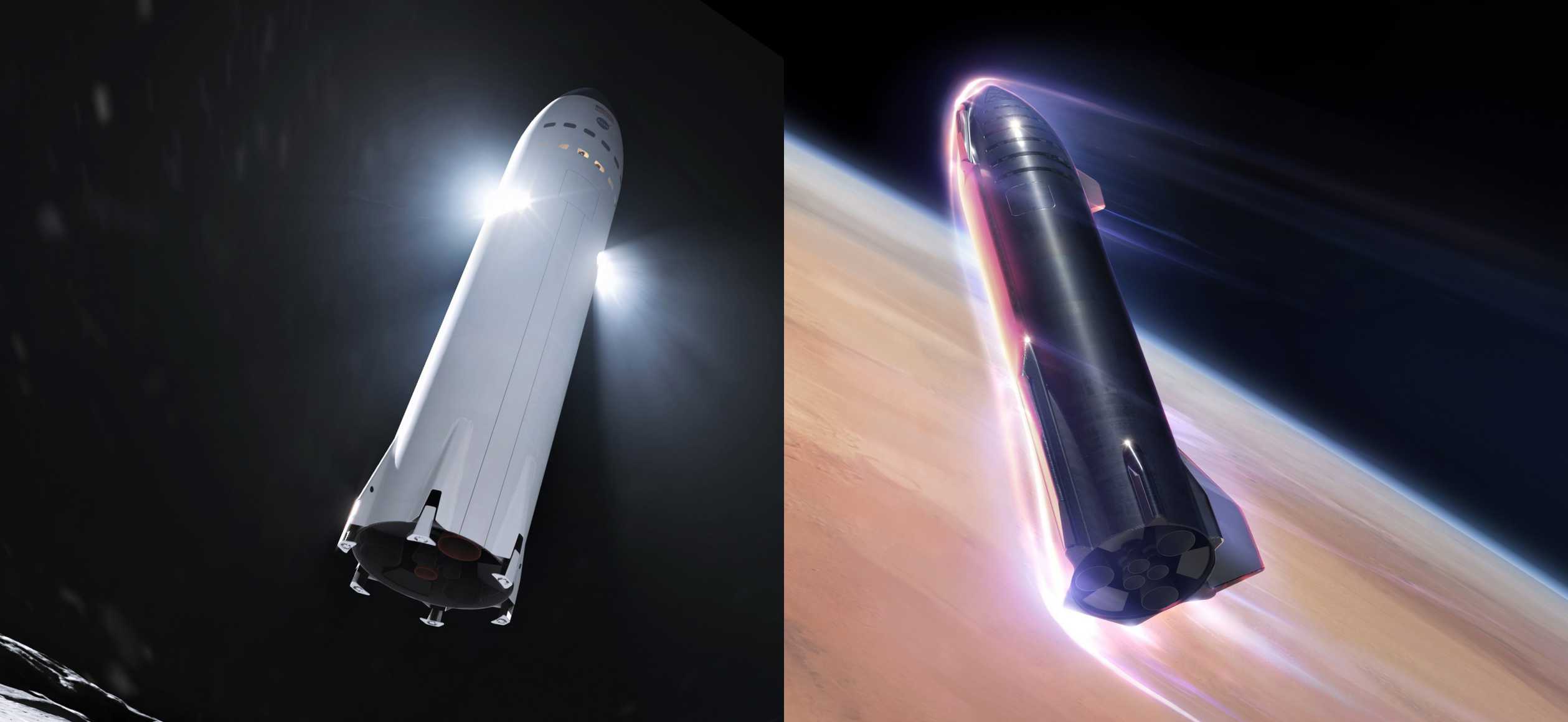
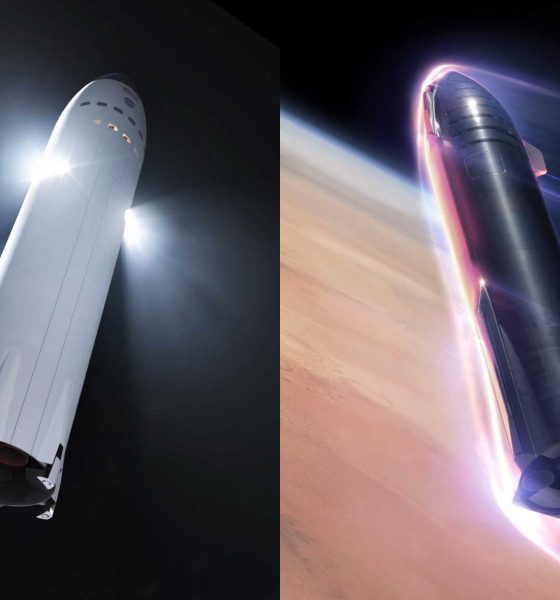
News
SpaceX’s Moon Starship is a brilliant step towards reusable Mars rockets
SpaceX’s newly-announced Moon Starship is a fairly radical departure from the Mars-focused, fully-reusable vehicle the company has been pursuing for years. Unintuitively, that may be the perfect half-step towards truly reusable Mars rockets.
On April 30th, NASA announced that SpaceX had won $135 million to design and build a highly-customized variant of its reusable Starship spacecraft with the intention of launching a handful of space agency astronauts to the Moon in the mid-2020s. Whether or not that initial seed translates into enough funding to seriously design and build the ship SpaceX has shown off in new renders, it has already broken the ice, so to speak, between the US federal government (or at least NASA) and the company’s ambitious next-generation launch vehicle.
With a substantial amount of money now on the table for SpaceX to begin initial work on its Moon Starship, it’s worth analyzing just how different it is from the Starship the company is working on today.
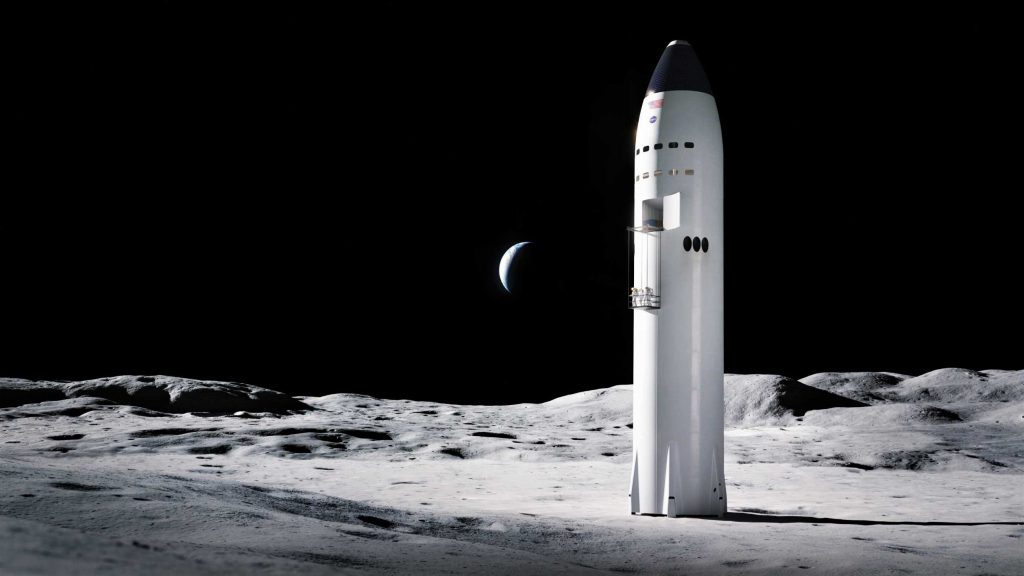
First and foremost, perhaps the most obvious difference between SpaceX’s ‘base’ Starship and its lunar variant is the rocket’s hull. In the case of the Moonbound ship, SpaceX appears to have returned to a fully-painted vehicle for unknown reasons. More likely than not, that white paint is likely motivated by the fact that proposed NASA Moon landers must (obviously) be capable of landing and safely returning their astronaut cargo back into lunar orbit.
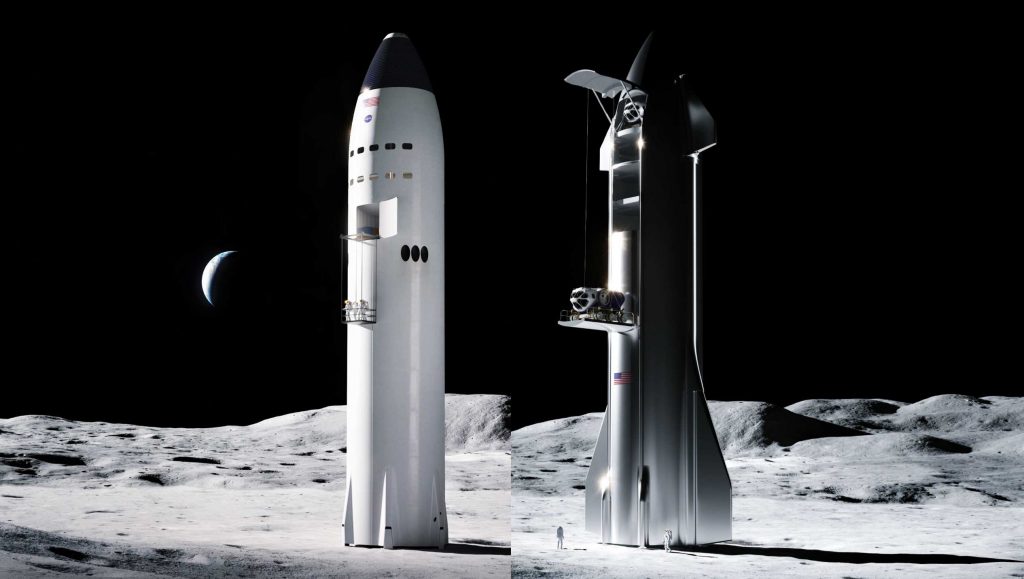
To do that, those landers must be able to sit on the surface of the Moon after landing for at least several days, with longer stays being even better. For Starship, this means that the vehicle must likely be able to keep its cryogenic liquid methane and oxygen propellant from warming up and turning into gas, thus preventing it from igniting its main Raptor engines. White paint is at least a bit more reflective (and thus insulating) compared to Starship’s shiny steel hull but it could also hint at the use of more extensive insulation then sealed off with paint.
This ties into perhaps the most significant functional change to the rocket. While visible in a render of the craft after landing on the Moon, a separate render just before touchdown fully revealed not only the addition of large vacuum-optimized retrothrusters – but a major strategic shift in how Lunar Starship will attempt to land on the Moon.
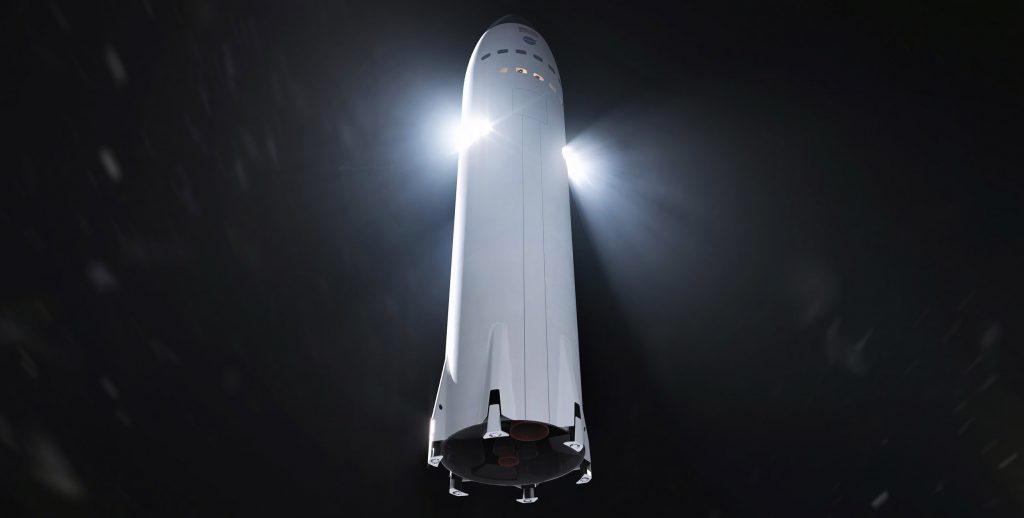
In short, it appears that SpaceX does not plan on propulsively landing Lunar Starship on the Moon under the power of its main Raptor engines. Instead, three triple-thruster clusters – likely relying on the same methane and oxygen propellant as Raptor – will fire up shortly before touchdown to gently land Starship on the Moon. This approach has significant benefits: the Moon’s gravity is so low (~1/6th of Earth’s) that using even just one engine as powerful as Raptor to land would be incredibly difficult – a single engine could theoretically lift a fully-fueled Starship thanks to low lunar gravity.
Additionally, powerful Raptor engines – even if they could be used to land – would likely dig huge craters in the Moon’s powder-like surface during a landing burn, making it more difficult astronauts to leave the ship to explore their surroundings. However, it also means that SpaceX must design and certify an entirely new kind of vacuum-optimized rocket engine – likely using gas propellant and fed by high-pressure tanks – for an extremely critical part of operations. If those landing engines were to fail, Starship would very likely crash on the Moon, marooning, wounding, or even condemning the astronauts aboard it.
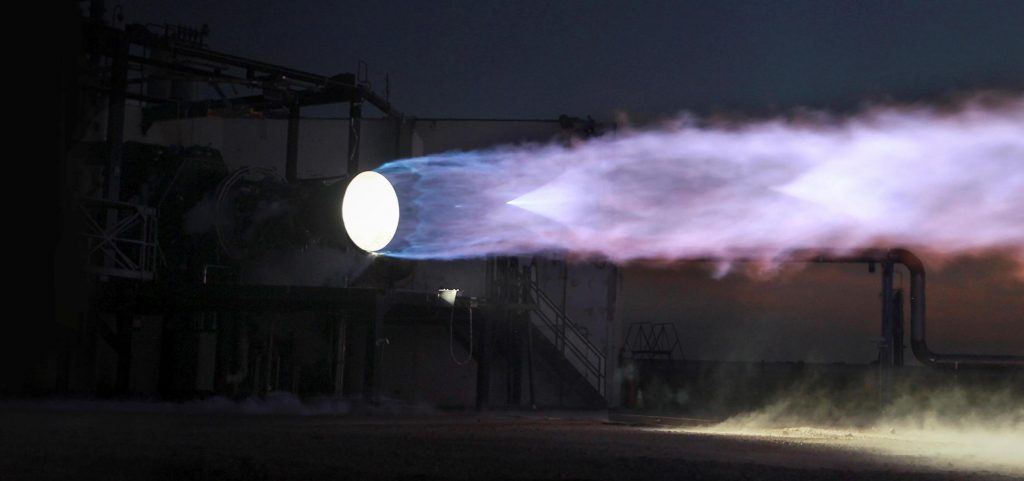
Beyond new thrusters, a radically different landing strategy, and a painted (and possibly insulated) steel hull, Lunar Starship also features what looks like the tip of a Crew Dragon spacecraft in place of its nose, likely including Draco thrusters and a docking port. SpaceX has also copied the concept of Crew Dragon’s trunk section, installing a curved solar array that wraps around a large portion of Starship’s conical nose. Lunar Starship also offers what looks like the first official glimpse into a new style of Starship landing legs, prototypes of which are already installed on Starship SN4.
Simplicity first (ish)
Additionally, SpaceX has chosen to entirely exclude a windward heat shield from Lunar Starship, as NASA’s plan is (rather painfully) to launch astronauts to the Moon with SLS and carry them to lunar orbit and back to Earth on Orion. Starship also appears to be missing its complex and extensive habitation module and massive gallery window. All that absent hardware is almost certainly meant to dramatically simplify Starship to the point that even NASA would consider funding its development. Incredibly, that strategy appears to have worked and it’s possible that we could see Lunar Starships flying to the Moon as early as 2022.
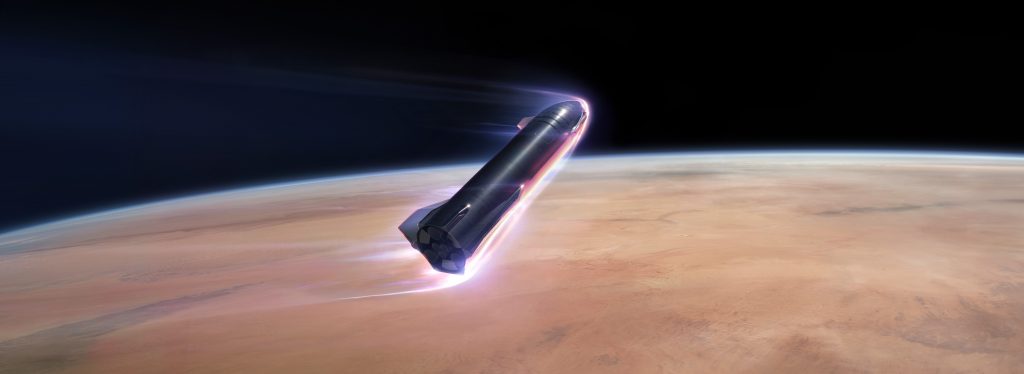
While a stop at the Moon is decidedly one-way and requires a bit of a one-off Starship variant, what SpaceX has really done is found a way to get NASA to help fund the development of its fully-reusable next-generation launch system. Even if NASA’s Artemis program dies, flounders, or goes nowhere, SpaceX will likely still benefit significantly, much in the same way that NASA’s assistance developing Cargo Dragon and Falcon 9 was a huge boon for the company.
Check out Teslarati’s Marketplace! We offer Tesla accessories, including for the Tesla Cybertruck and Tesla Model 3.

Elon Musk
Delaware Supreme Court reinstates Elon Musk’s 2018 Tesla CEO pay package
The unanimous decision criticized the prior total rescission as “improper and inequitable,” arguing that it left Musk uncompensated for six years of transformative leadership at Tesla.

The Delaware Supreme Court has overturned a lower court ruling, reinstating Elon Musk’s 2018 compensation package originally valued at $56 billion but now worth approximately $139 billion due to Tesla’s soaring stock price.
The unanimous decision criticized the prior total rescission as “improper and inequitable,” arguing that it left Musk uncompensated for six years of transformative leadership at Tesla. Musk quickly celebrated the outcome on X, stating that he felt “vindicated.” He also shared his gratitude to TSLA shareholders.
Delaware Supreme Court makes a decision
In a 49-page ruling Friday, the Delaware Supreme Court reversed Chancellor Kathaleen McCormick’s 2024 decision that voided the 2018 package over alleged board conflicts and inadequate shareholder disclosures. The high court acknowledged varying views on liability but agreed rescission was excessive, stating it “leaves Musk uncompensated for his time and efforts over a period of six years.”
The 2018 plan granted Musk options on about 304 million shares upon hitting aggressive milestones, all of which were achieved ahead of time. Shareholders overwhelmingly approved it initially in 2018 and ratified it once again in 2024 after the Delaware lower court struck it down. The case against Musk’s 2018 pay package was filed by plaintiff Richard Tornetta, who held just nine shares when the compensation plan was approved.
A hard-fought victory
As noted in a Reuters report, Tesla’s win avoids a potential $26 billion earnings hit from replacing the award at current prices. Tesla, now Texas-incorporated, had hedged with interim plans, including a November 2025 shareholder-approved package potentially worth $878 billion tied to Robotaxi and Optimus goals and other extremely aggressive operational milestones.
The saga surrounding Elon Musk’s 2018 pay package ultimately damaged Delaware’s corporate appeal, prompting a number of high-profile firms, such as Dropbox, Roblox, Trade Desk, and Coinbase, to follow Tesla’s exodus out of the state. What added more fuel to the issue was the fact that Tornetta’s legal team, following the lower court’s 2024 decision, demanded a fee request of more than $5.1 billion worth of TSLA stock, which was equal to an hourly rate of over $200,000.
Delaware Supreme Court Elon Musk 2018 Pay Package by Simon Alvarez
News
Tesla Cybercab tests are going on overdrive with production-ready units
Tesla is ramping its real-world tests of the Cybercab, with multiple sightings of the vehicle being reported across social media this week.

Tesla is ramping its real-world tests of the Cybercab, with multiple sightings of the autonomous two-seater being reported across social media this week. Based on videos of the vehicle that have been shared online, it appears that Cybercab tests are underway across multiple states.
Recent Cybercab sightings
Reports of Cybercab tests have ramped this week, with a vehicle that looked like a production-ready prototype being spotted at Apple’s Visitor Center in California. The vehicle in this sighting was interesting as it was equipped with a steering wheel. The vehicle also featured some changes to the design of its brake lights.
The Cybercab was also filmed testing at the Fremont factory’s test track, which also seemed to involve a vehicle that looked production-ready. This also seemed to be the case for a Cybercab that was spotted in Austin, Texas, which happened to be undergoing real-world tests. Overall, these sightings suggest that Cybercab testing is fully underway, and the vehicle is really moving towards production.
Production design all but finalized?
Recently, a near-production-ready Cybercab was showcased at Tesla’s Santana Row showroom in San Jose. The vehicle was equipped with frameless windows, dual windshield wipers, powered butterfly door struts, an extended front splitter, an updated lightbar, new wheel covers, and a license plate bracket. Interior updates include redesigned dash/door panels, refined seats with center cupholders, updated carpet, and what appeared to be improved legroom.
There seems to be a pretty good chance that the Cybercab’s design has been all but finalized, at least considering Elon Musk’s comments at the 2025 Annual Shareholder Meeting. During the event, Musk confirmed that the vehicle will enter production around April 2026, and its production targets will be quite ambitious.
News
Tesla gets a win in Sweden as union withdraws potentially “illegal” blockade
As per recent reports, the Vision union’s planned anti-Tesla action might have been illegal.

Swedish union Vision has withdrawn its sympathy blockade against Tesla’s planned service center and showroom in Kalmar. As per recent reports, the Vision union’s planned anti-Tesla action might have been illegal.
Vision’s decision to pull the blockade
Vision announced the blockade in early December, stating that it was targeting the administrative handling of Tesla’s facility permits in Kalmar municipality. The sympathy measure was expected to start Monday, but was formally withdrawn via documents sent to the Mediation Institute and Kalmar Municipality last week.
As noted in a Daggers Arbete report, plans for the strike were ultimately pulled after employer group SKR highlighted potential illegality under the Public Employment Act. Vision stressed its continued backing for the Swedish labor model, though Deputy negotiation manager Oskar Pettersson explained that the Vision union and IF Metall made the decision to cancel the planned strike together.
“We will not continue to challenge the regulations,” Petterson said. “The objection was of a technical nature. We made the assessment together with IF Metall that we were not in a position to challenge the legal assessment of whether we could take this particular action against Tesla. Therefore, we chose to revoke the notice itself.”
The SKR’s warning
Petterson also stated that SKR’s technical objection to the Vision union’s planned anti-Tesla strike framed the protest as an unauthorized act. “It was a legal assessment of the situation. Both for us and for IF Metall, it is important to be clear that we stand for the Swedish model. But we should not continue to challenge the regulations and risk getting judgments that lead nowhere in the application of the regulations,” he said.
Vision ultimately canceled its planned blockade against Tesla on December 9. With Vision’s withdrawal, few obstacles remain for Tesla’s long-planned Kalmar site. A foreign electrical firm completed work this fall, and Tesla’s Careers page currently lists a full-time service manager position based there, signaling an imminent opening.








